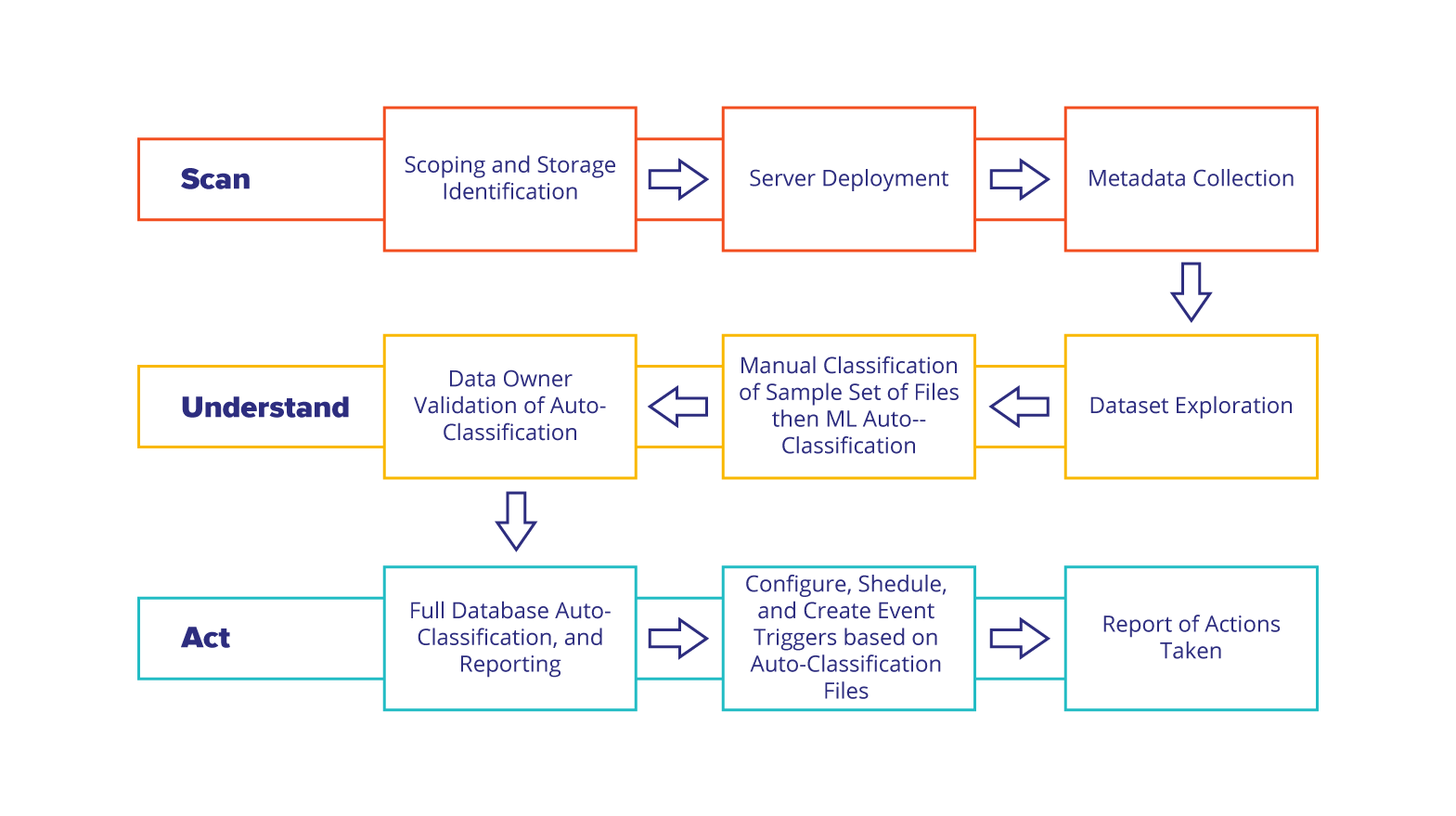Our client is a multinational professional services firm, one of the "Big Four" audit companies. It is one of the largest professional service companies in the world and in the top ten largest privately owned organizations in the US.
The organization operates as a network of member firms which are separate legal entities in individual countries. It has more than 270,000 employees in over 700 offices across 150 countries in the world. It provides financial audit and assurance, tax, consulting and advisory services to companies.
The Problem
Our client’s personnel offer proactive information governance advice aimed at reducing the risk and cost associated with electronically stored information. They can create an information governance strategy, test both governance and operational adherence or implement performance monitoring.
According to statistics:
- 80% of all enterprise data is unstructured
- Unstructured data in the enterprise is predicted to grow up to 80% annually
- 69% of all that unstructured enterprise data no longer has any legal or business value
- In 2020, 55% of your data storage is being spent on keeping and maintaining Redundant, Outdated, and Trivial (ROT) data
Business Challenge
As our customers’ data became larger and less manageable, cost avoidance became impossible, and the dangers from excessive data retention became unavoidable.
Specific challenges included:
- Limited data visibility
- Inability to act
- Lack of context
- Lack of simple to use boxed solution
Project Description
Our client partnered with SoftServe to design and implement a solution that meets even the most challenging demands:
- All-in-one
- Purpose built
- Hyper fast
- Big data scalable
- Analytic driven
- Decisive
- Defensible
The solution is a Technically Assisted Classification (TAC) tool. It is a web application that helps users effectively govern the storage space by collecting files, analyzing them, and performing actions on them in the file system. This tool significantly reduces the cost of storage maintenance and helps optimize the business.
The application contains three main stages: metadata collection, file classification, and action management.
The TAC tool includes the following top-level components:
- Commander Module: Central management console for TAC tool
- Collector and Action Node: Data collection and action application
- Analytics Module: Data classification engine
- Database: Central data storage

TAC tool features:
- Scanning engine
- Scalable architecture
- Scalable database
- Two-pass data analytics engine
- Auto-classification engine
- Modularly expandable data analytics platform
- Modularly expandable visual analytics platform
- Modularly expandable data exploration platform
- Unified interface for above items
SoftServe worked independently and cooperated with the client on product requirements.
There were three main releases:
- Data scan
- Data classification
- Operations on data
Value Delivered
SoftServe provided a smooth delivery of the project implementation phase, despite the absence of product owner on the client’s side during the last stage.
As a result, the Technically Assisted Classification tool provides the following values for each user type:
General Counsel
- Reduces risk of privacy and data breaches
- Improves eDiscovery search performance and reduce cost
- Complies with regulatory data disposal mandates
Corps Information Systems Control Officer
- Transitions security strategy from threat- centric to asset centric (truly risk-based)
- Enables big data protection capabilities
- Improves data loss prevention capabilities / reduces risk of breach
- Segments data by business unit
Chief Financial Officer / Chief Operation Officer
- Reduces risk of privacy and data breaches
- Reduces total cost of ownership for enterprise storage management
- Improves business resiliency and disaster recovery capabilities
Chief Information Officer / Chief Technology Officer
- Reduces total cost of ownership for enterprise storage management
- Improves enterprise search efficiency and data quality
- Improves business resiliency and disaster recovery
- Improves data backup operations
- Improves data allocation enforcement
Business Owners
- Improves data management and data sharing capabilities
- Improves enterprise search efficiency and data quality
- Improves business resiliency and disaster recovery capabilities

